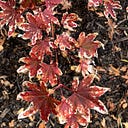An evening at the the Stanford Astronomy Fair
A Community Day event
It was quite an unexpected sight in the Stanford campus. A Galaxy of little kids and their parents orbiting all around. In their own ways, having fun, and perhaps making some sense of this Universe. The staff and students at Stanford outdid themselves in engaging their little guests with an array of games, activities, and captivating storytelling.
I was impressed myself on a variety of topics that were explained and demonstrated quite well. And visited a few stalls that were not overly crowded.
At the center of the indoor displays, a magnificent Van de Graff generator captured everyone’s attention. The enormous metallic ball generated thousands of volts of static electricity, creating lightning-like sparks that excited both kids and parents alike.
The Infra Red section was particularly interesting. This Infra Red camera does not depend on light.. It measures warmth, and hence can detect certain events very well. Like the warmth of the fresh traces of finger prints.. It can detect an object enclosed in a opaque plastic bag..
And how cool it is.. These very principles are used to overlay and capture detailed images of outer space.
There was a rig on Detecting Dark Matter Particles. Kids were playing a thrilling game called “Dark Matter Excitation” using Nerf Guns, making it feel like they were living in a Sci-Fi movie. Whenever the Nerf gun hit the simulated Dark Matter, a detection LED would glow, adding to the excitement.
It was interesting to learn that deep in the mines, scientists conduct experiments to detect Dark Matter particles by a process of elimination. They isolate all the known particles and observe what remains. If they detect something else, it must be Dark Matter.
Next in line, was a popular stall on Light and Spectroscopy. With the use of thin films, it was possible to view the colors that made up the light. It was fascinating to see how white light produced a broad spectrum of colors compared to Xeon light, which created fewer colors.
The stall also had an interactive activity where kids could create binocular-like rigs using these films to capture and measure wavelengths. I was excited about making one for myself with the film and cut-outs.. Just then I realized they ran out of the stock and a little kid behind me was standing disappointed. No big deal and I gave him my stuff.
Next in line was Making Your Own Pulsar exhibit. It was fascinating to learn that pulsars were stars with lights on two ends that appeared to pulse due to their rotation.
After exploring the indoor exhibits, we went outdoors to find more exciting activities. A sprawling lawn with stone-cut planets of different sizes caught my attention. Kids were having a great time sliding on them, adding to the playful atmosphere.
There was a corner on UV beads. These beads would turn purple when exposed to light. Children were encouraged to experiment with ways to protect the beads, such as placing them under sunglasses or applying sunscreen. It was a fun and educational way to learn about the effects of UV radiation.
Next in line was Cooking a Comet exhibit, where I learned that comets are made up of dust and fog in cold temperatures. It is the light from other stars that makes them visible. A kid made an interesting statement. “By the law of Cooncidences.. I have heard Comets bring bad luck like the Covid 19.”
Next exhibit was on Solar Flares. The student was trying to make the topic interesting for her little listener. “The Sun has a lot of energy and there is a magnetic dance. Sometimes the plasma comes out causing Solar Flares. Luckily for us, the Earth’s atmosphere protects us from these harmful radiations. Just like the shield that is used during X Ray. But what about the safety of Astronauts in the Space? Hence like weather predictions, we need to predict these Solar Flares for their welfare.”
At the end, we visited the IR telescope, and had the audacity to view the Sun and its black spots.
It was indeed an accelerating day with all these interesting exhibits.. I often wonder.. The force that holds the atom also holds the Universe.. Thanks to museums and these exhibits that make science and astronomy imaginable, accessible and enjoyable for everyone.
https://kipac.stanford.edu/events/20th-anniversary-community-day
